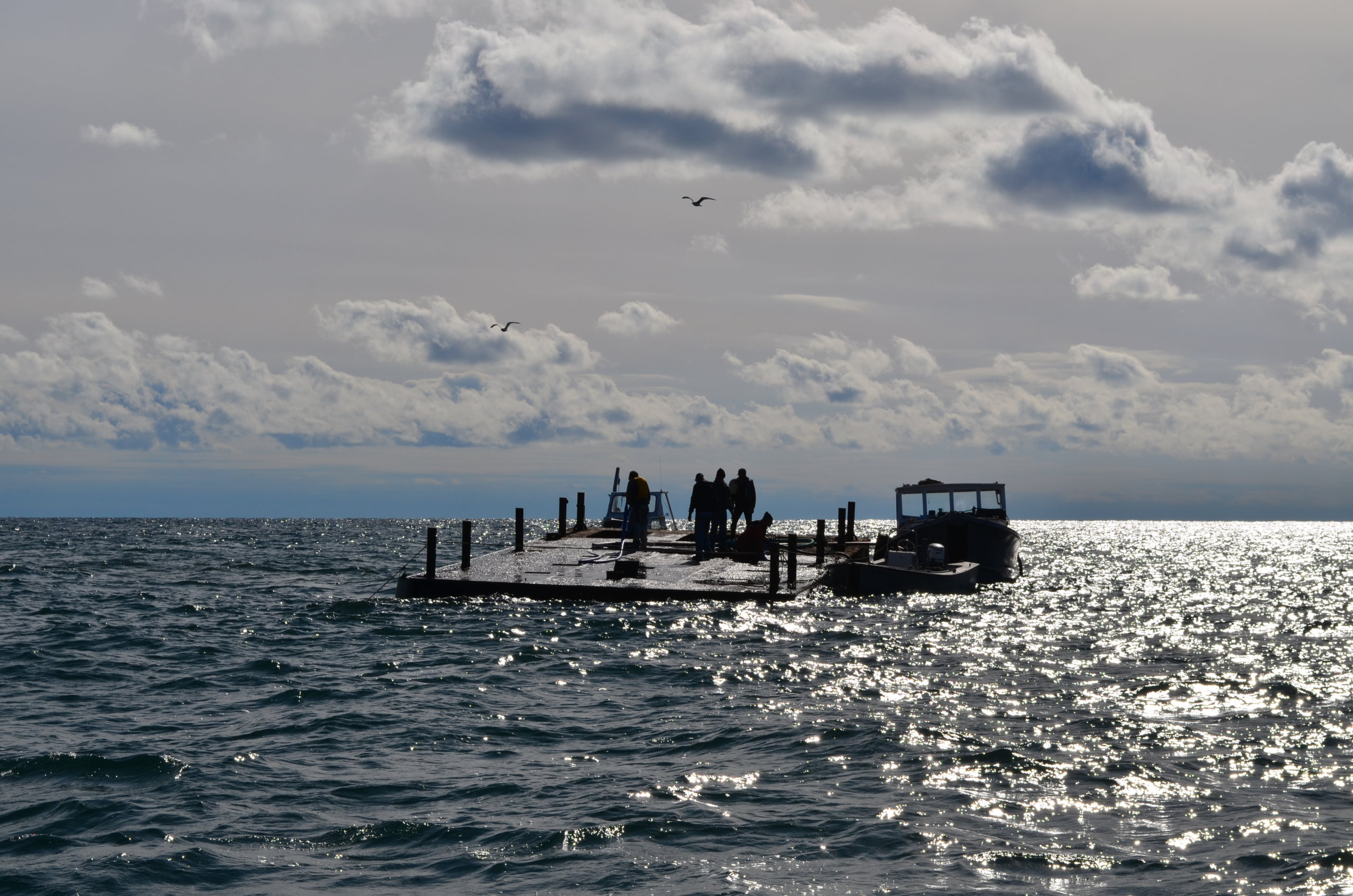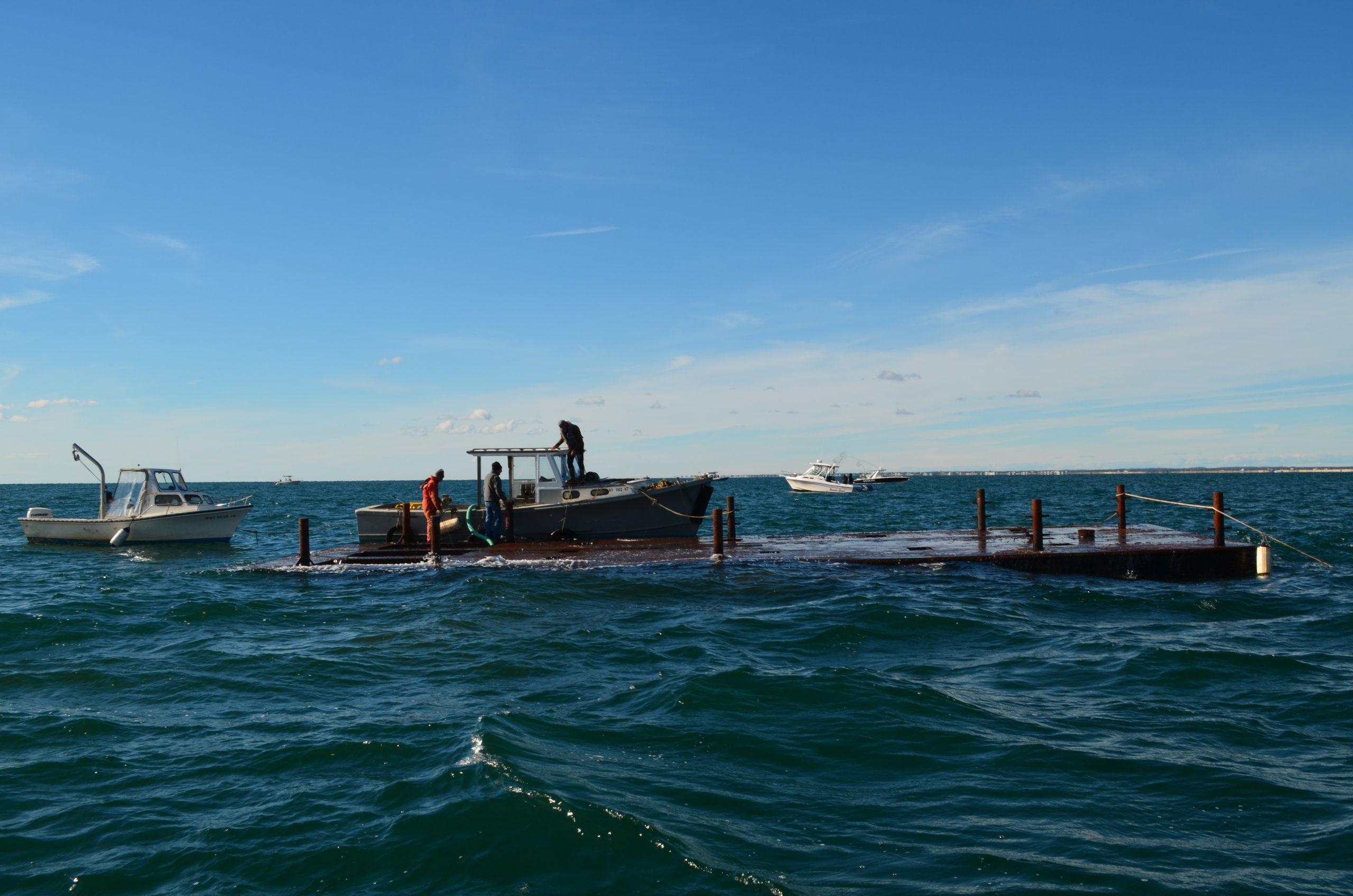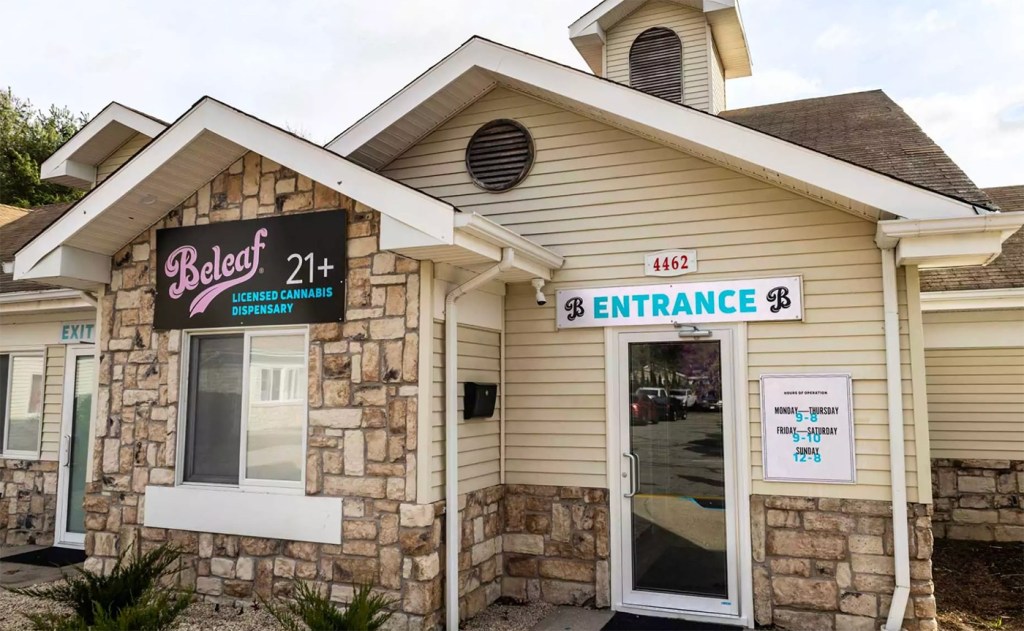DEC Sinks Barge to Enhance Shinnecock Artificial Reef

New York State Department of Environmental Conservation (NYSDEC) purposely sank a large, 60-foot steel barge, Shannon C, on the Shinnecock Reef as part of the State’s ongoing efforts to enrich New York’s network of artificial reefs and build a stronger, more diverse marine ecosystem, NYSDEC Commissioner Basil Seggos announced on Friday. The barge was used in marine construction for more than 30 years, working out of East Hampton and, notably, it served as the launchpad for fireworks displays in Westhampton Beach, East Hampton and Shelter Island.
“This latest successful addition to the Shinnecock Artificial Reef helps connect a bit of the region’s maritime past with Long Island’s economic future,” Commissioner Seggos said. “The Shannon C will enjoy her retirement as the newest attraction for marine life and the anglers and divers who seek a thrill.”
Built in 1973, Shannon C is a steel deck barge owned by DJ Whelan Corp. It was used for building docks, bulkheads and revetments, launching ramps, and dredging in waterways throughout Long Island, the Hudson River, New York City, Fishers Island, Plum Island, Connecticut and beyond.
“The barge Shannon C was named after our daughter Shannon,” owner Mary Whelan explains in the announcement. “Shannon grew up on the water and enjoyed sailing, boating, fishing, surfing, or simply being near the ocean. It’s fitting that her namesake will become part of Shinnecock artificial reef and, over time, provide valuable marine habitat and enjoyment for others who adore the ocean just like she did.”
A Sag Harbor native, Shannon Cecilia Whelan died at the age of 38 after she suffered a cardiac arrest in January of 2019. She lived in Sydney, Australia.

The NYSDEC manages 12 artificial reefs in New York, including two reefs in Long Island Sound, two in the Great South Bay, and eight in the Atlantic Ocean. Since 2018, New York State’s Artificial Reef Program has deployed a total of 521 cubic yards of Tappan Zee Bridge materials, 200 tons of New York State Department of Transportation steel pipe, columns, beams, girders and trusses, one New York Canal Corporation steel barge, two New York Canal Corporation vessels, and seven steel center-beam railcars on Shinnecock Reef.
All materials were deployed under the guidance of the DEC Reef Program to ensure they are safely cleaned of contaminants prior to joining the reef. The Shannon C was also deemed safe before it was deployed last week.
Reef construction is part of former Gov. Andrew Cuomo‘s “NY is Open for Fishing and Hunting” initiative, an effort to improve recreational activities for in-state and out-of-state visitors and to boost tourism opportunities throughout New York. Other initiative programs include offering free freshwater fishing clinics and spending millions of dollars to repair derelict boat launches and build new launches all over NY State.
The NYSDEC says the artificial reef is popular with local fisherman and divers, and that activity helps the economy as people who fish or dive at the reefs must buy fuel, bait and tackle, and marine equipment — not to mention those who hire party/charter and dive boats. It also claims that more than 500,000 anglers reap the benefits of New York’s artificial reefs, supporting the region’s growing marine economy which accounts for approximately 9.7 percent of Long Island’s total GDP.
Artificial Reef Commercial Fishery Outreach Meetings
In conjunction with the seven artificial reef expansions, and the creation of four new sites, the NYSDEC is asking commercial fishing interests to provide feedback that will help guide the future development of these sites and avoid conflicts with the commercial industry. To do this, it is inviting commercial fishing interests and stakeholders to attend meetings on changes to artificial reefs in the Atlantic Ocean and Long Island Sound, including one locally on Monday, November 22 from 3–7 p.m. at Shinnecock Commercial Fishing Dock located at 333 Beach Road in Hampton Bays. The NYSDEC is especially interested in connecting with commercial fishermen to help identify fishing locations on charts provided at the meetings or by providing GPS data collected while fishing.
For more information about DEC’s Artificial Reef Program, visit dec.ny.gov.



